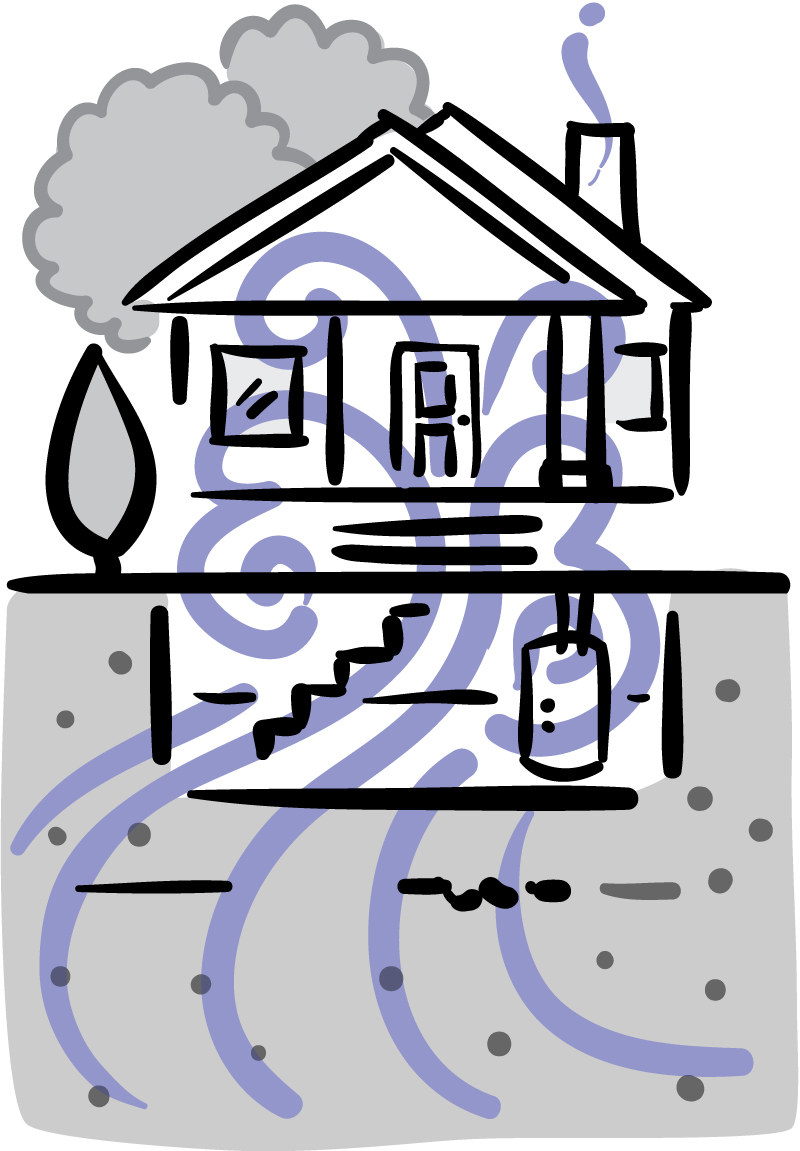Radon Risk
Its Perils Can be Prevented

If you’re buying a new home, the house may need to be tested for radon, depending on local laws. Although the tests aren’t required everywhere, you should insist on it. You might not be able to see or smell radon, but it can still harm you—slowly, and in ways that you can’t detect.
Radon is a colorless, odorless, radioactive gas. It comes from the natural decay of the radioactive chemical elements uranium or thorium. These elements are found in nearly all soils.
Radon gas typically moves up through the ground and comes into homes through cracks in floors, walls and foundations. Sometimes it enters the home through well water. Certain building materials can give off radon, too. However, building materials rarely cause radon problems by themselves. Whatever the source, your home can trap radon inside, where it can build up.
Surveys show that radon levels vary widely across the country. But high levels can occur in any area, and any home may have a radon problem. This means new and old homes, well-sealed and drafty homes, and homes with or without basements. Nearly 1 out of every 15 homes in the United States is estimated to have elevated radon levels. Elevated levels have been found in homes in every state.
Radon gas breaks down quickly, giving off tiny radioactive particles that can get trapped in your lungs when you breathe. As they break down further, these particles release small bursts of energy. This can damage lung tissue and raise your risk of developing lung cancer.
Radon exposure is thought to be the second leading cause of lung cancer after active smoking—and the leading cause among people who have never smoked. Scientists estimate that 15,000 to 22,000 lung cancer deaths nationwide each year are related to radon.
Scientists believe that there are no safe levels of radon in the home. The effects of being exposed accumulate over time so that it may take many years for disease to appear. NIH-funded scientists have been working to better understand the relationship between radon exposure and cancer risk.
The good news is that many radon-related lung cancer deaths can be prevented. But testing is the only way to know if you and your family are at risk. The Environmental Protection Agency (EPA) and the U.S. Surgeon General recommend testing all homes below the third floor for radon. Testing is inexpensive and easy. It should only take a few minutes. You can purchase radon test kits by calling the EPA-supported National Radon Hotline at 1-800-SOS-RADON (1-800-767-7236).
If you’re not comfortable doing the testing yourself, you can have a professional do it. Many states require radon professionals to be licensed, certified or registered. To find your state’s resources, go to www.epa.gov/radon/whereyoulive.html.
If it turns out you do have high radon levels in your home, you can take steps to lower those levels—a process called radon mitigation. Some radon reduction systems can reduce radon levels in your home by up to 99%. Even very high levels can be reduced to acceptable levels. Find out more about fixing radon problems at www.epa.gov/radon/pubs/consguid.html. Or call the National Radon Fix-It Line at 1-800-644-6999.
Make sure you’ve had your home tested. It’s easy, it’s inexpensive and it could save lives.
NIH Office of Communications and Public Liaison
Health and Science Publications Branch
Building 31, Room 5B52
Bethesda, MD 20892-2094
Contact Us:
nihnewsinhealth@od.nih.gov
Phone: 301-451-8224
Share Our Materials: Reprint our articles and illustrations in your own publication. Our material is not copyrighted. Please acknowledge NIH News in Health as the source and send us a copy.
For more consumer health news and information, visit health.nih.gov.
For wellness toolkits, visit www.nih.gov/wellnesstoolkits.




